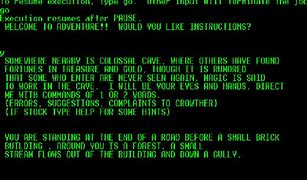Text-based computer games, often referred to as interactive fiction or “text adventures,” can be considered underrated in today’s gaming landscape, primarily due to the rise of visually rich, action-packed games that focus on high-end graphics and immersive 3D worlds. However, text-based games have a unique set of qualities that make them enduringly valuable and underappreciated.
Anybody who’s played an online text-based browser game, TBBG for short, has probably heard that “these games are dying anyway” when the subject of dwindling game populations arises. As a player for many years, and now a creator of such TBBGs, I’ve heard it a lot. Usually from players that have got bored with that particular game. A quick google of whether text based games are dying yields a great many articles going back at least 7 years in some cases. Yet, these games are still here… What’s going on?
First and foremost, text-based games are deeply rooted in storytelling. Without the distraction of flashy graphics or complex animations, the player’s imagination becomes the main tool for immersion. Every detail, from the setting to the characters, is conjured through words, which means that a text-based game has to be extremely well-written and evocative to create a compelling experience. This allows for a level of narrative depth and complexity that is sometimes harder to achieve in more visually driven games. Classic titles like Zork or The Hitchhiker’s Guide to the Galaxy are prime examples where the focus on text-driven narrative created memorable, mind-expanding experiences.
Text-based games also encourage a different kind of player engagement. Instead of relying on reflexes or rapid decision-making, they require careful thought, problem-solving, and exploration. These games often offer puzzles and scenarios that require logical thinking, patience, and attention to detail. The slower pace of interaction means that players are more likely to absorb the game’s world, its story, and its mechanics in a way that rewards deeper thinking and creativity.
Another underrated aspect is the role of accessibility. Text-based games do not demand high-end hardware or complex graphics rendering, which means they can be played on a wider range of devices, including older computers and smartphones. Furthermore, their reliance on text allows for greater inclusion of people with certain disabilities, such as those who are visually impaired, as screen readers and other assistive technologies can more easily interpret the written word.
Despite the rise of modern, graphically intensive games, the charm and appeal of text-based games remain timeless. They offer a more introspective and imaginative gaming experience, often focusing on the art of storytelling, puzzle-solving, and thoughtful interaction rather than flashy aesthetics. The fact that they remain beloved by a dedicated fanbase underscores their enduring value. In many ways, text-based games may not receive the recognition they deserve in the larger gaming community, but their legacy and potential should never be underestimated.






